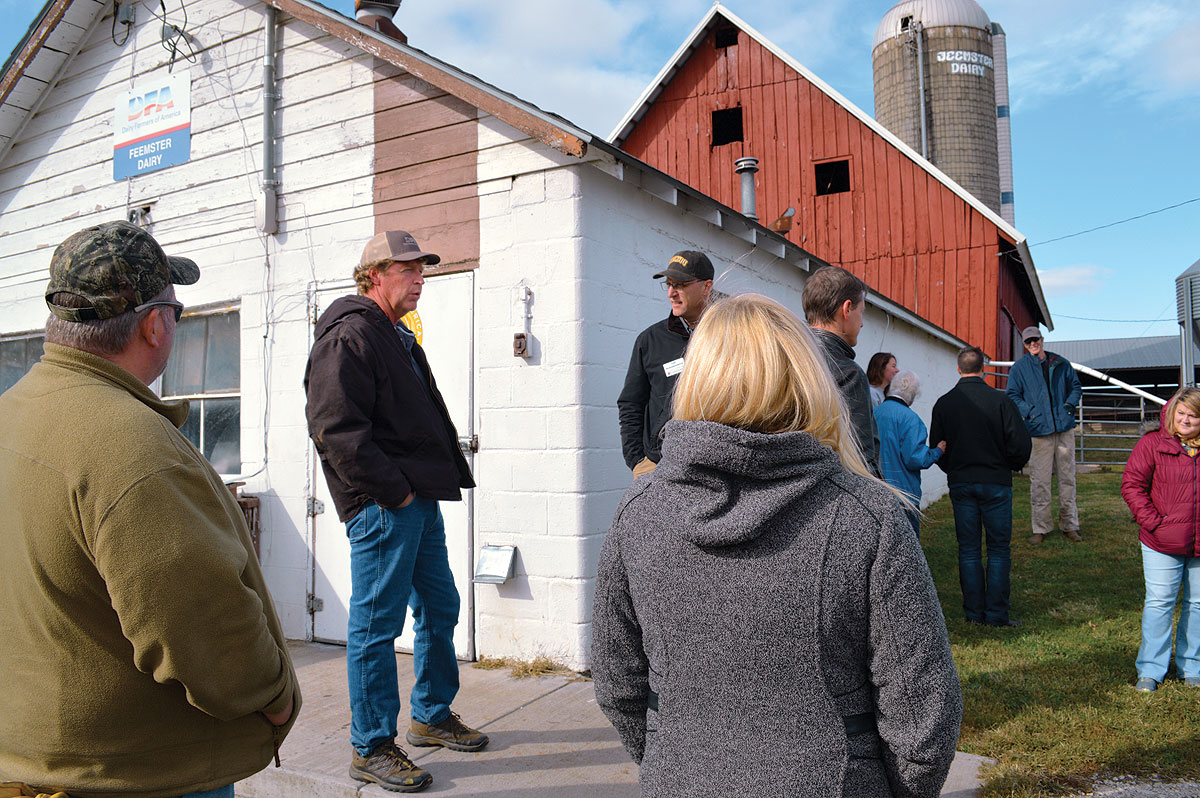
When Bill Johnson's ancestors started working his farm outside Walnut Grove back in 1869, one of their first priorities was making sure they had good water for their livestock. Over the years, several different approaches have been used. Bill pointed out a concrete box built by his grandfather to collect water from a natural spring on the property. Later, a pond was built in the same area.
Bill believes that his latest approach to dependable water is the best one yet. He joked that “it is the greatest creation since the pyramids.” Comparisons aside, the water tank Bill has built is sturdy, dependable, low maintenance and inexpensive. In fact, the main component of the tank is free.
The tank is built from a used heavy equipment tire. Bill explained that generally heavy equipment operators have to pay several hundred dollars to dispose of these used tires. He said that the option to donate the tire for use as a farm tank is a welcome alternative. In some cases, the equipment operator may even deliver the tire for free.
Bill said he got the idea for his tank while attending an event hosted by the Greene County Soil & Water Conservation District. Will Rhodes and Eric Morris of the SWCD office assisted him in the design and installation of the tank. The basic principle of the tank is simple. Lay the tire flat, cut holes in the top, and fill it with water.
Bill said there are several options in construction. He began by laying a gravel base. Since he wanted his water lines to be underground, Bill ran the lines up before setting the tire over them. He then set the tire and poured concrete in the middle until it reached the level of the bottom bead of the tire. He added some silicone where the tire bead met the concrete. However he said that if you fill the tank with water while the concrete is still fresh, the weight of the water will press the tire into the concrete as it sets and the silicone won't be necessary.
The most difficult part of the installation Bill said, was cutting the holes in the top of the tire for livestock access. Since these tires are quite thick and have reinforcing fibers in the rubber, this task takes some effort. For his tank he used a Sawzall with a fine toothed blade. Johnson said he's heard of people making the cuts using a worn chainsaw with good results. But he said the best solution he's seen was from the Reilly family from Wyoming, whom he met at Farm Fest. They have a shear that simply travels around the tire, slicing the top off.
The amount of the top to remove depends on the size of the tire and the livestock that will be accessing the tank. Bill's tire is relatively low, so he cut a series of holes in the top, rather than remove the entire top, to reduce the ability for cattle to stand in the tank. He also put a cover over the center circle for the same purpose. He pointed to pictures of tanks using much larger tires where the entire top was removed.
Bill said that his tire water tank is the most trouble-free watering solution he's ever had. A Gallagher float system under a covered portion of the tire makes the water tank automatic. He said the tank serves 100 steers all summer without any problems. In five years of use, he has had to clean the tank only once. He also said it almost never freezes over. On days when the in-ground concrete waterer he has a few yards away has frozen over, his tire tank was still open.
Bill Johnson is very happy with his big tire watering tank. He recommends them highly. He offered to show his tank to anyone who is interested, saying, “if they're half way well behaved, I'll be tickled to have 'em.” For more information on building a stock tank from heavy equipment tires contact your local SWCD office.







